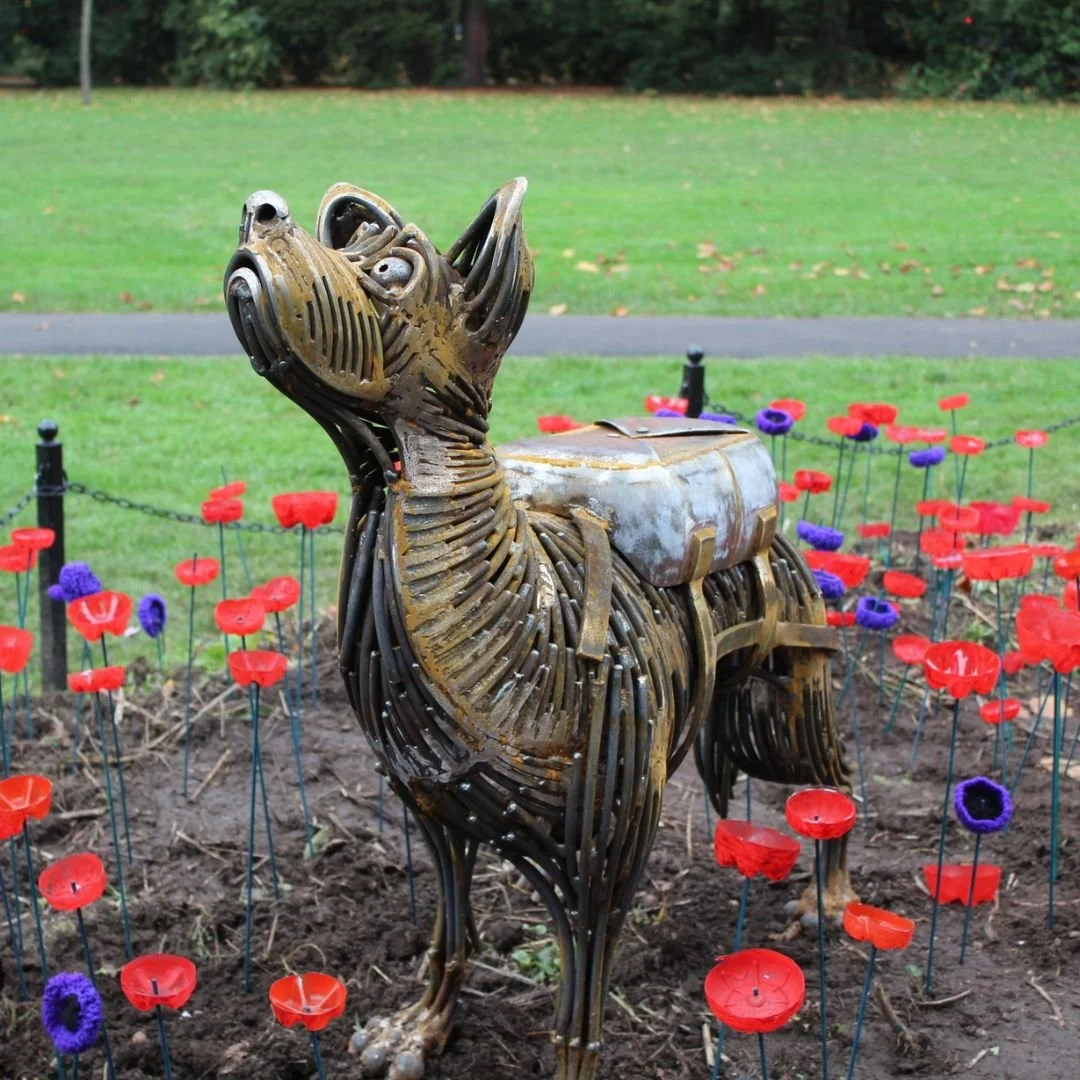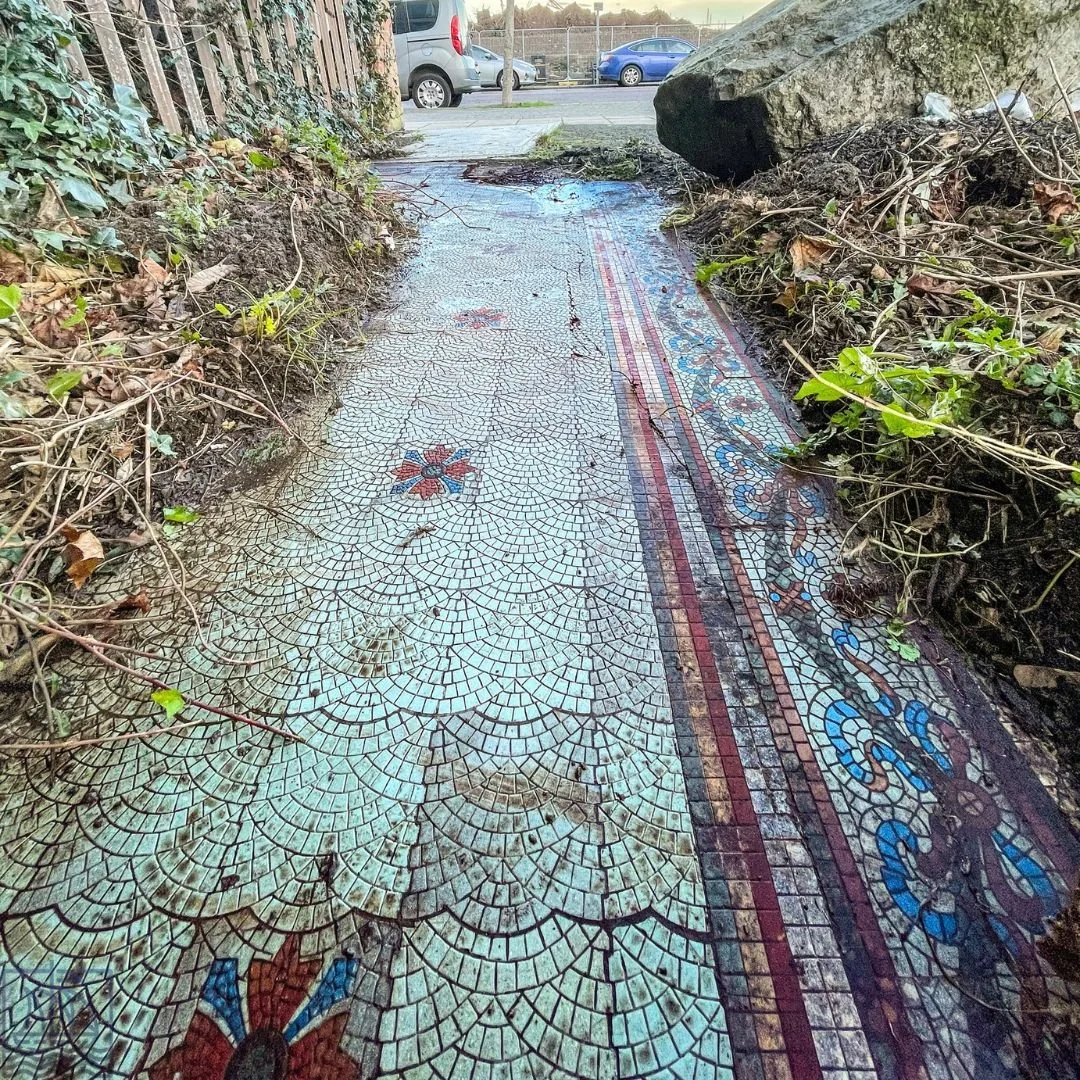Loughborough's War Dog Hero Who Parachuted Into D-Day
Loughborough is now home to a poignant tribute: a sculpture commemorating Bing, a remarkable local war dog who saved countless lives in WW2.
Photo: Charnwood Borough Council
Bing, an extraordinary canine soldier, has been immortalised in a unique sculpture placed prominently in Queen's Park, joining the existing tribute to Songster, the Loughborough war horse, in front of the iconic Carillon Tower.
This recognition is a testament to Bing's incredible service and the bond between humans and their animal comrades in conflict.
Bing’s wartime service was nothing short of heroic.
Photo: Charnwood Borough Council
Due to wartime rationing that made it difficult to feed large animals, Bing, an Alsatian and Collie cross originally named "Brian", was handed over to the army in 1944 by his owners, the Fetch family of Loughborough.
Trained as a highly skilled military working dog, his role was critical to locate the enemy and provide protection to military personnel in the most dangerous theatres of war.
During D-Day in 1944, Bing was parachuted into the chaos of Normandy, playing a vital role in one of the most significant operations of the war.
Serving with the 13th Parachute Battalion, 6th Airborne Division, Bing was parachuted alongside his handler, Lance Corporal Ken Bailey, into the contested area of Ranville in the early hours of June 6.
His parachute jump was harrowing: amid heavy German anti-aircraft fire, Bing, despite his training, refused to jump and had to be "pushed" from the plane by a jumpmaster.
He landed badly, becoming snagged in a tree, from which his handler, Lance Corporal Ken Bailey, had to rescue him under enemy fire.
Despite this traumatic start and sustaining minor injuries, Bing immediately commenced his duties.
Photo: Charnwood Borough Council
His primary duties were focused on immediate threat detection behind enemy lines.
Using his highly sensitive nose, Bing acted as the unit's early warning system, trained specifically to locate concealed enemy soldiers and, crucially, to detect deadly landmines and booby traps that could not be found by conventional means.
Bing’s actions as a scout, sentry, and detector dog were pivotal to the safety and survival of the paratroopers he served alongside in the months following the D-Day landings.
His ability to identify hidden dangers gave his human comrades precious advance warning, significantly mitigating the high risk of ambushes and casualties in the fierce fighting.
The demanding nature of his service, which involved operating in the chaos of battle, underlines why he was later recognised with the PDSA Dickin Medal - the animal equivalent of the Victoria Cross - for his extraordinary courage and life-saving contributions on the front lines.
This medal firmly establishes Bing in the pantheon of animal war heroes.
Photo: Charnwood Borough Council
The PDSA Dickin Medal has been awarded 75 times since its creation in 1943 to recognise animals displaying outstanding bravery and devotion to duty during military service or in times of crisis.
Dogs are the most frequent recipients, with 38 awards.
These canine heroes performed roles similar to Bing, acting as vital sentries, scouts, and mine detectors in combat zones, such as Rob the Collie, who completed over 20 parachute descents with the SAS, and Judy the Pointer, who helped sustain morale in a Japanese POW camp.
The medal has also honoured search and rescue dogs like Rip and Irma, who saved numerous lives during the London Blitz, and modern heroes like Salty and Roselle, who guided their blind owners to safety during the 9/11 attacks.
Following dogs, Pigeons have received the second-highest number of awards, with 32 recipients.
These feathered messengers were crucial during both World Wars for their reliability in transporting vital intelligence across enemy lines when radio communication was unreliable.
Notable pigeons include Gustav, who carried the first message back from the Normandy beaches on D-Day, and William of Orange, who delivered a critical message during the intense Battle of Arnhem.
Finally, the medal has also been awarded to four Horses, including Warrior, who received an honorary medal representing all animals who served in World War I, and one Cat, Simon, who is famous for surviving shellfire and protecting the crew's food supply from rats aboard HMS Amethyst during the Yangtze Incident.
Bing’s bravery continued into 1945 when he was again parachuted into the thick of the action, this time into the Rhine in Germany.
Following the war's conclusion, Bing was happily reunited with his original owners, the Fetch family.
When he passed away in 1955, his remains were prepared for dual tributes: his skin and fur were preserved and mounted for display as a tribute to his service, while the rest of his body was laid to rest at the PDSA Animal Cemetery in Ilford, Essex.
The book The Amazing Adventures of Bing the Parachuting Dog about his life was published in 2012
Photo: Charnwood Borough Council
This creation and installation of the magnificent sculpture in his memory was the result of a dedicated community project.
The initiative was spearheaded by Loughborough in Bloom, and it received vital support from the Council and Serco UK.
The task of capturing Bing’s spirit and image fell to local talent.
The unique sculpture of Bing was expertly designed and created by the talented Loughborough artist, Duncan Thurlby.
His work ensures that Bing’s amazing story will continue to inspire and remind visitors of the sacrifices made by all who served.
It is a truly amazing story and a well-deserved recognition for a dog who gave so much in the service of his country.
Reacting to the sculpture on social media, someone said: “Absolutely, beautiful, a wonderful story and a fitting tribute. Walked past Bing this afternoon and so much loved the poppies.”
Another person added: “It gets better….the dog’s owners were called Mr & Mrs FETCH!”
We will remember them.
We hope you enjoyed this blog post. Thank you to Charnwood Borough Council for giving us permission to use their photos of the statue.
Please do following Exploring GB on Facebook for more!
Don’t forget to check out our latest blog posts below.



















